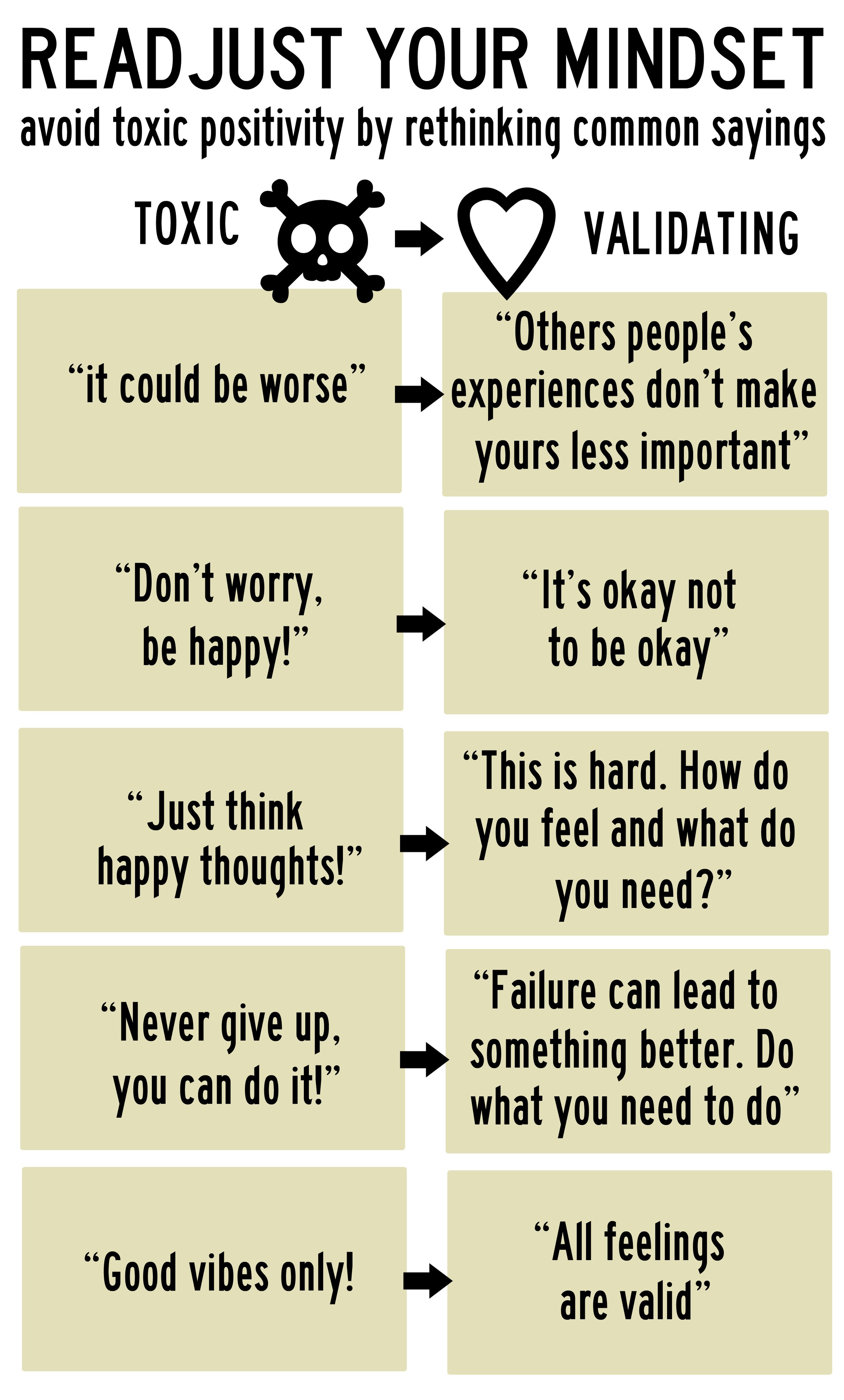Beware of Toxic Positivity
Last week, our team was posed with the question, “My staff was once so upbeat and positive, but now my building is full of negativity. How do we combat that and address it with our staff?” It is a very challenging time right now for educators, as we mentioned in a previous blog, and there is no doubt that a lot of school leaders across the country are asking this very same question.
However, we encourage educators to examine a different question. Is negativity actually the problem, or is it that educators are expected to show up everyday – all day – being positive and upbeat? After conversations with teachers and administrators, we’ve found that it’s the latter of the two. Unfortunately.
Yes, a negative culture and climate is extremely toxic for staff, students, and families. However, feigned and forced positivity can be just as toxic. We can all agree that teaching or leading a school is a very demanding and exhausting job, everyday. We can also agree that this is especially true right now. Given that, expecting staff to show up everyday with exuberant smiles and bursting with cheer and energy is probably one of the most unrealistic bars to hold high. Doing so creates a breeding ground for toxic positivity.
Toxic positivity is the belief that despite a person’s pain, frustration, or difficult situation, they should only have a positive mindset or maintain “positive vibes only.” While it is true that seeing the positive side of things and finding ways to maintain joy is good practice, it is also true that there are times when life gives us lemons. During those times, it is important for people to have the opportunity and encouragement to process the emotions that surface.
We admit that embracing and dealing with human emotions can be daunting and unpleasant at times, but it is necessary and critical for the mental and emotional health of our people. Choosing not to do so creates burnout, dissonance, and cultivates a culture of distrust and resentment, which ultimately leads to the negativity (amplified by 100) that we want to avoid.
So, how should educators address toxic positivity? We never pretend to have all of the answers, but we always have some ideas! Here is a list we’ve assembled to help you begin to tackle and identify toxic positivity in your building:
COMBATING TOXIC POSITIVITY
Acknowledge Challenge and Avoid Gaslighting: The first step in effectively addressing any problem is to admit the problem exists in the first place. Ignoring that there are challenges and frustrations that educators are facing, individually and collectively, can make people feel alone and insecure about their perception of their environment. Thus, this can [and will] inevitably lead to unhealthy relationships, a culture of distrust, and force educators to run to the nearest exit.
Cultivate Safe Spaces for Sharing Diverse Perspectives: Staff huddles and celebrations are great and highly effective. It allows people to dig into their happy hearts and minds. It’s important that these spaces exist. It is just as important for there to be opportunities and spaces for staff to openly and honestly share their not-so-bubbly opinions and feelings without the fear of being reprimanded or shamed. Office hours and team meetings could be the perfect time for staff to bring concerns and frustrations to the table. It could also be the perfect time to let them know they are heard and valued, and at some point there may also be some resonance shared.
Share Genuine Words of Affirmation: We all need a little gas in our tanks once in a while. Positive feedback and shoutouts are the most common practices educators use to bring joy to our team. However, that joy can be fleeting if it is superficial or disingenuous and it can add to that pile of negativity that you are trying to get rid of. Be intentional about noticing all of the truly wonderful things happening in your building, and celebrate it publicly and consistently.
Leverage School Counselors and Mental Health Professionals: None of us need any reminders about the challenges we are facing as educators right now. In fact, the word “challenge” might be a bit of an understatement. Which is why it would benefit us to dedicate time and resources to address our mental health. School counselors are excellent people to leverage in your building. They can provide resources and professional development workshops for educators to learn how to process and cope with the emotions they are harboring right now. For buildings without school counselors, there are external resources and support available.
Embrace Authenticity and Vulnerability: Ask people how they are really feeling, and allow them to share without judgement. Model doing this yourself as well. Recognize the courage and trust that is required to embrace genuine authenticity and vulnerability. Appreciate that people feel safe enough to share and be their true selves.
HOW DO YOU KNOW IF THERE’S TOXIC POSITIVITY IN YOUR BUILDING?
You feel guilty or slighted for showing frustration. You hear things like, “You need to focus on the good things” or “Happiness is a choice. Choose happiness.”
There are mechanisms in place to force positivity —crucial conversations with your boss about maintaining emotional constancy or rubrics that explicitly name positive attitude as an evaluative measure.
The print environment encourages positivity at all costs. There are those “Good Vibes Only” posters all over the place.
There’s minimizing language. Peers and colleagues often respond to your challenges with “It’s not that bad” or “At least it’s not [insert something perceivably worse than what you’re going through].”
You feel anxious and stressed whenever you feel disagreement or misalignment with something and find it difficult to speak openly about it.
Need support with cultivating a healthier building culture, contact us. We’d be happy to help!
Related Posts


